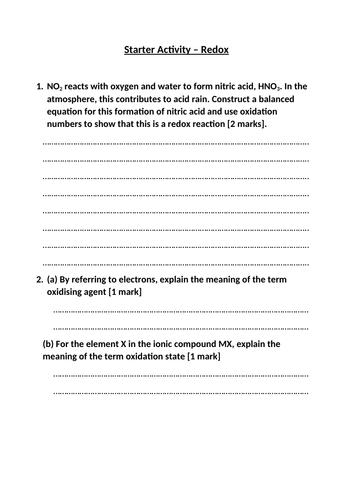


A structured KS5 lesson (lesson 2 of 2) including starter activity, AfL work tasks and practice questions with answers on Redox Reactions. Suitable for Year 13 OCR A-Level Chemistry
**By the end of this lesson KS5 students should be able to:
LO1: To understand that the overall increase in oxidation number will equal the overall decrease in oxidation number
LO2: To construct balanced half equations and overall redox equations from reactions in acidic conditions
LO3: To construct balanced half equations and overall redox equations from reactions in alkaline conditions (stretch & challenge)
The teacher will be able to check students have met these learning objectives through mini AfL tasks for students to complete
All tasks have worked out answers, which will allow students to self assess their work during the lesson
Declaimer: Please refrain from purchasing this popular resource for an interview lesson or a formal observation. This is because planning your own lessons, including using your own lesson PowerPoints, is a fundamental skill of a qualified/unqualified teacher that will be assessed during the scenarios outlined above
Something went wrong, please try again later.
This resource hasn't been reviewed yet
To ensure quality for our reviews, only customers who have purchased this resource can review it
Report this resourceto let us know if it violates our terms and conditions.
Our customer service team will review your report and will be in touch.